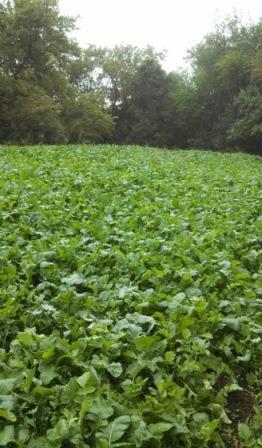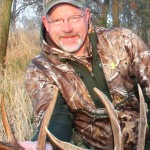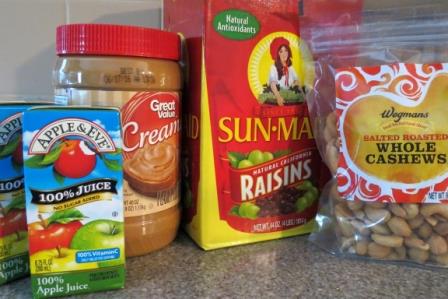By Nicole McClain
Here’s what seasoned bowhunters
do for big bucks!

Bucks like this aren’t everywhere, but if you find one, and you work for him, you can put a tag on him. (Photo: Nicole McClain)
Antler scores are arbitrary when hunting whitetails. While it’s true that a 140-inch buck is every hunter’s dream, many variables come into play which stack the odds against the hunter’s ultimate accomplishment. It’s just not realistic in many parts of the country.
Not realistic — but certainly not impossible. A 140-inch buck is possible nearly everywhere whitetails live, if you abide by these five proven tactics my big buck-hunting friends and I use.
1. Hunt Low-Pressure Property
This is the No. 1 key to any type of successful deer hunting. If you’re hunting pressured ground (especially public land), that eye-popping buck may not be there. You simply cannot shoot a deer that doesn’t exist.
Think about hunting pressure. The best deer hunting land usually attracts the most hunters. If you hunt in deer-rich states like Ohio, Kentucky, Wisconsin or Pennsylvania, you’ve probably found yourself vying for prime spots. These states hold a ton of deer, but they also attract plenty of hunters. In some areas, hunting pressure exceeds 20 hunters per square mile. That’s more than one hunter for every 40-acre parcel — insane! If a mature buck’s home range is approximately a square mile, you can see why few bucks will live to maturity. In short, that buck will walk in front of a hunter who will say “good enough,” and shoot him before that buck puts the age behind him (four years minimum in all but the best habitat) to grow a 140-inch rack.
So, for a mature buck you need to carefully select property with low hunting pressure.

Dreaming of big bucks is the closest most of us will get to a 140-inch buck – but they’re out there and you can find them if you work hard. (Photo: Nicole McClain)
2. Hunt Suburban Deer
My home state of Ohio has proven that you don’t need access to 200 acres to grow monster whitetails. A good sanctuary is key to any property growing a big buck. It must have some kind of buffer (thick cover where hunting pressure is limited or nonexistent) where deer can escape. This helps deer grow old — and big.
Suburbs are good places for this type of environment. Many suburban “McMansions” are surrounded by excellent edge habitat and often farmland. Find a little 5-, 10- or 20-acre parcel near a suburb, and you might find a honey hole of epic proportions.
3. Low Impact Hunting
The key to hunting suburban bucks is a low-impact approach — super low impact. Here are five major tips to low-impact hunting:
- Hang all of your stands in summer, and don’t hunt them until the time is right in fall.
- Clear walkways so you can reach your stands quickly and quietly, and only hunt when the wind is right.
- Unless you are hunting food sources on the property, stay out of the hunting area until the rut.
- Trophy hunting in urban environments is all about quality time afield — not quantity. Trail cameras can show you when deer are moving and likely to be vulnerable.
- Find a different doe hunting property. In suburban landscapes trying to hunt does on the same property where you’re hunting trophy bucks can be counterproductive. Mature bucks quickly pick up on anything that’s out of the ordinary, and simply shift their behavior to avoid you.

A mature buck in most states is not an every year occurrence. And every mature buck has a story that gets told over and over again. (Photo: Nicole McClain)
4. Hunt Deer by Age Class
Obviously, shooting young bucks won’t get you an old buck. So don’t simply settle for a branch-antlered buck. Instead, teach yourself how to identify bucks of different age classes. Study the deer you see in magazines, TV shows and trail camera photos.
Depending on which region you hunt, a 2 1/2-year-old buck will have a rack that’s not quite as wide as his ears. He will score around 70 inches — in the best habitat maybe 100. A 3 1/2-year-old buck starts to get most hunters excited. His body is chiseled, and his rack makes you take a second look. He could score anywhere from 110 to 130 inches in the Midwest. Many hunters would be more than happy to shoot this deer.
Not satisfied with anything other than a REALLY big deer? Then target a buck that’s 4 1/2 years old or older. These deer are a rare sight. By biological standards, this is when they reach full maturity. His rack is hefty and his body is well filled out, definitely a shoulder mount for the wall. If you’re fortunate to hunt a property that produces mature deer like this one, you’ll be on your way to getting the drop on a buck of your own. Be warned: Just because a 4 1/2 year old exists doesn’t mean you’ll bag him. It could take years of “holding out” until you finally get the opportunity to bag one of these beasts.
5. Hunt Out of State
More and more hunters each year are realizing that the time, money and investment in land that grows fully mature deer is either too rich for their blood or a drain on their family commitments. Buying or leasing land, tilling food plots, investing in cameras and other gear easily reaches thousands of dollars.
Consider paying for an outfitted hunt where someone else does all of that prep work for you. A guided hunt is not for everyone, but it’s one way to observe lots of deer in just a few days and have a real chance of seeing a mature buck like you’d never see on properties at home. These trips will also make you a better hunter by exposing you to more deer behavior in a shorter time than you’re likely to get at home.
Which states offer the best odds of seeing a 140-inch deer while on an outfitted hunt? Some might argue for other locales, but Iowa, Illinois, Kansas, Kentucky and Wisconsin are five really good places to start your search.
Good Luck and Never Quit
Hunting is an exercise that involves land, gear and mental strategy as much as it does tactics. It’s mental and physical — psyche and soma are the Greek words. Mind and body — two faces of the same coin that cannot be separated. If you want to bag the monster buck of your dreams, you need mental and physical preparedness, you can’t expect success all the time, and you can never quit.
About Nicole McClain:
 Nicole McClain (@McClainTweets) is involved with many different brands, publications and TV shows including “Scentblocker Most Wanted TV” on Outdoor Channel, Mathews, Rage Broadheads, Deer and Deer Hunting magazine, “Deer and Deer Hunting TV” on NBC Sports, Havalon Knives and Grizzly Coolers. She says, “I’m a warrior, hunter, fighter and survivor, regardless of what mud you sling my way. I’m good with mud.”
Nicole McClain (@McClainTweets) is involved with many different brands, publications and TV shows including “Scentblocker Most Wanted TV” on Outdoor Channel, Mathews, Rage Broadheads, Deer and Deer Hunting magazine, “Deer and Deer Hunting TV” on NBC Sports, Havalon Knives and Grizzly Coolers. She says, “I’m a warrior, hunter, fighter and survivor, regardless of what mud you sling my way. I’m good with mud.”
Sign up and become a part of the
Havalon Nation today!
[hs_action id=”10664″]
7,825 total views, no views today

















